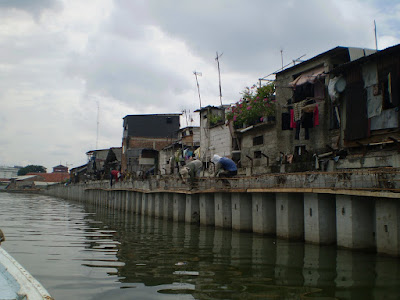Jämtlandstriangeln is a set of hiking trails in the mountainous tundras of northern Sweden. Most of the area is above the tree line, and in the summer the area is filled with mountains, fresh water streams, valleys, and swamps.
Last week, I spent three days and two nights hiking and camping in the wilderness of Jämtlandstriangeln. My trip began from Stockholm, where I boarded an overnight train headed for Jämtland, the historical region of Sweden where I would be hiking. I had two roommates in my three-bed cabin, and we spent the first few hours trading stories while drinking a little cognac in our coffees borrowed from my roommates friend. The train ride was generally comfortable, but Sweden has been having a heat wave recently, making the train especially hot inside, forcing me to leave the window open in my cabin and causing the noise and light of the train to spill in throughout the night journey.
 |
| My cabin on the train. |
The next morning, I took advantage of the shower on the train to get one last shower in before my wilderness adventure. Unfortunately, the guy who had given us some of his cognac had all of his stuff stolen during the night. The thieves left one change of clothes for him and his medicine, but everything else, including his mobile phone, was taken.
 |
| Departing the train in Duved. |
After 11 hours on the train, I got off at Duved, where I boarded a bus to Storulvan, the mountain station where my hike began. The trail started off fairly easy, though all the hiking of the next three days was made more difficult by the unexpectedly high temperatures, which reached around 27 C (80 F) each day. During my trip, I felt like I encountered every environment on Earth: the trail led up the sides of mountains, down into valleys, through mosquito-infested swamps, and across dry barren plains, and past mountain glaciers.
 |
| Near the start of the trail. Boards cross over some swampy terrain. |
One of the greatest things about mountains of Sweden is the abundance of fresh water streams and rivers which are safe to drink from. Whenever I found myself overheating, I was usually never far from the next stream, where I could jump in and cool off and then get a cool drink.
On the first night, after covering 16 km, I set up my tent a few kilometers from one of the points on the triangle shape formed by the trails of Jämtlandstriangeln. The temperature was high and there wasn't a cloud in the sky. I laid in my tent for a few hours, trying to recuperate from the day's hike, when suddenly a powerful thunderstorm arrived. Heavy winds and rain pelted my tent, forcing the metal supports to bend down and nearly collapsing the tent. I laid on the tent floor and held my hands up to keep the tent from completely collapsing on top of me. After 30 minutes of wind and rain, the lightning started, with some strikes sounding like they hit less than 100 meters away. Scared that I might be hit, things got worse when the hail started. My hands, still trying to keep the tent from collapsing, felt each hailstone as it struck the thin later of tent separating the storm outside from my shivering body. After an hour, the storm passed, and the weather quickly returned to hot and sunny. In the wake of the storm, the mosquitos came out in force. The fog of mosquitos was so dense that I was forced to eat a protein bar inside my tent instead of cooking my meal on the stove.
 |
| On the trail to Sylarna. |
 |
| Getting closer to Sylarna. |
 |
| My camping spot near Sylarna. |
 |
| Glaciers cover the mountains. |
With Jämtland being in the far north of Sweden, the sun is only below the horizon for a few hours, and it never gets completely dark, even in the middle of the night.
 |
| Cooking breakfast on the second morning using water gathered from the river in the background. |
On the second day, I hiked 18 km in what was definitely the most difficult leg of my hike. The sun was never blocked by clouds, and the constant temperatures above 25 C kept me hot. The landscape on this part of the trip was especially hilly, with long stretches going up hill. Towards the end of the day, I ran out of sunblock, forcing me to keep my pant and shirt sleeves rolled down and my hat on to avoid sunburns. I encountered three reindeer during the day, two of which nearly ran me over. I finally arrived at Blåhammaren's mountain station at around 16:00, where I decided to treat myself to their famous fruit soup, which deserved all its praise. I set up my tent on the side of a mountain, and cooked myself some tofu-chicken and cous-cous for dinner.
 |
| Climbing the mountain on the second day. |
 |
| So much cool, refreshing water to drink! |
 |
| View from Blåhammaren. |
For my final day, I decided to start my hike at dawn, to get my hiking in while the sun was low, keeping my skin safe and body cool. I packed my tent at 4:30 and started off on the final 12 km of my journey. When I arrived back at Storulvån's mountain station at 9:15, I cooled myself off one last time with a dip in the cool river. I'd never felt more refreshed during the whole trip.
 |
| My tent on the second day. |
After another bus trip and 12 more hours on a train, I was back home in Stockholm for some much needed recovery and relaxation.
 |
| Descending back down into the river valley on the third day. |




















































